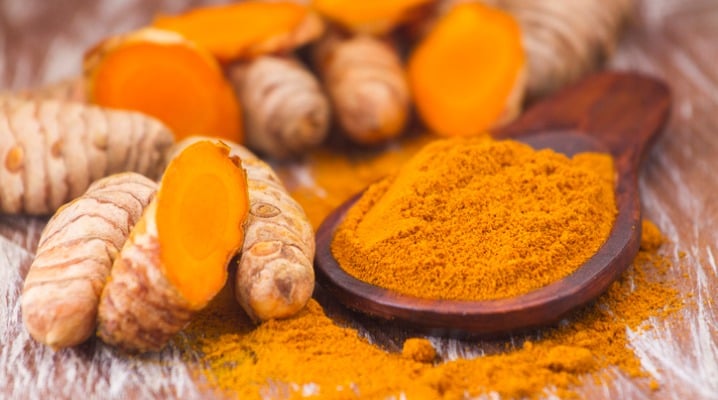6 Ways to Naturally Soothe Sore Joints
You want to be able to enjoy your favorite activities, spontaneous adventures, and outdoor fun - not have to sit them out due to joint pain and stiffness! Joint discomfort is a common experience for many of us, no matter our age, and also a natural part of the aging process. Though it might not be possible to reverse the effects of time, there are ways to offer support to your joints to help you keep up with the fun.
Joint discomfort
Knee pain is one of the most common issues affecting joints, but other joints can also be affected, including shoulders, wrists, hips, ankles, and elbows. While arthritis is the most common cause of joint discomfort, other causes can include injury, tendonitis, overuse, lupus, fibromyalgia, osteoporosis and more. There are many types of arthritis, but the two main types are rheumatoid arthritis, which is an autoimmune condition, and osteoarthritis, which is caused by wear and tear on the cartilage of your joints over time.
Joints are where two bones meet, and they have a lining of cartilage on their inner surfaces to cushion them from rubbing on one another. Joint pain is usually caused when this cartilage layer grows thin, causing pressure where the bones meet, or, depending on the degree of cartilage deterioration, bone-on-bone articulation.
Ways to mitigate joint discomfort
There are strategies you can take to care for your body that can help in reducing stiffness and soreness in your joints, or with decreased joint mobility. Our bodies hold us up - and keep us going - so it’s important we sustain them!
1. Water
Although getting the recommended amount of water is advisable for many reasons, doing so can also assist joint function. Your joint cartilage is made up of around 80% water, so staying hydrated can benefit your cartilage as well as the quality of the synovial fluid surrounding certain joints, to help keep them lubricated. It’s important to stay hydrated, especially when you’re exercising.
2. Staying physically active
Being motivated to exercise when you’re experiencing joint discomfort can be a challenge, but it can help benefit your physical resilience. Physical activity increases blood flow throughout your body, keeping your muscles, ligaments, and tendons strong and supple so that they can help support your movement and decrease strain on your joints and cartilage.
As well, engaging in habitual exercise helps you maintain a healthy weight, stay mobile, and assists with preventing increased pressure on your joints. When starting out, keep your activities low-impact and check in with your body as you develop a routine that works for you!
.jpg)
3. Acupressure
Acupressure and acupuncture have been used in traditional Chinese medicine for millennia. Western medicine is just beginning to study and quantify the potential benefits of these techniques, showing that they may help manage joint pain. Soothing, targeted touch - whether it’s your own during self-massage or that of a professional practitioner - may be worth trying if you are experiencing joint stiffness and aches.
4. Posture
A lot of us are sitting more than usual these days, and whether it’s at an office or working from home, many professions require a significant amount of time spent in front of a computer. Being sedentary, especially looking down at a screened device, can entrench detrimental posture with rounded shoulders and spine, contributing to a whole slew of potential aches and pains all over your body.
You might use mindfulness techniques, physical signs, or set interval timers to remind yourself to stretch and adjust your posture from your workstation. Other ideas to try are implementing a standing desk, daily yoga or other movement practices based around posture improvement, and breathing exercises to keep you aligned!

5. Anti-inflammatory diet
Learning about anti-inflammatory nutritional principles is helpful for anyone, especially those who experience inflammatory conditions like rheumatoid arthritis or osteoarthritis. An anti-inflammatory diet rich in beneficial omega-3 fats can help curb inflammation in your body, including in your joints and surrounding tissues.
Aim to keep refined sugars and processed, packaged foods to a minimum if you experience joint issues. Processed and refined foods can contribute to inflammation in your body, as well as impact your health negatively in other areas. Opting for a diet rich in colorful fruits and vegetables is ideal for decreasing inflammation as well as supporting your overall health!
6. Supplementing for healthy joints
Augmenting your daily routine with joint-supportive supplements is an excellent, proactive option, especially if you’re looking to avoid over-the-counter medications. (Always listen to your healthcare provider’s advice with regards to a treatment plan, though!) There are many supplement choices for joint health including glucosamine, MSM, collagen, chondroitin, omega-3 fatty acids, and others.
Turmeric (and curcumin, the main active antioxidant compound found in turmeric) is a popular holistic option for joint health, and for good reason! Curcumin is a natural anti-inflammatory and is often combined with black pepper to improve its bioavailability. Turmeric is familiar to many as a culinary spice, and can also be taken as a supplement or enjoyed in a cup of comforting Golden Milk Bliss. Golden milk is a traditional Indian beverage that is served warm and lightly sweetened - a perfect, non-caffeinated afternoon pick-me-up! Turmeric is a versatile option for your joint health.


Leave a comment